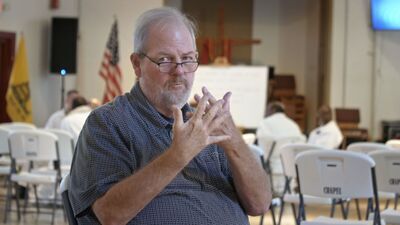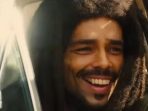We began production of “Breaking Silence” during the pandemic, during a time of great change and uncertainty, and our vision for the film kept evolving in response to what was going on in Leslie’s life and also in the world at that time. We were writing and re-writing the story beats while we were in production, sculpting the arc around the scenes we were able to capture. The timeline to complete stretched due to these constraints, but also led to exciting discoveries and a more nuanced film. Once we got access to the prison, which was 2 years in, the film started to land in a way that it hadn’t without those scenes. And we were able to weave the discoveries we made in making the film, into the discoveries the viewer makes while watching. I’d love to credit our editor Karen Skloss for working with Annie and me to beautifully structure and weave scenes and moments together to enable that unfolding of a relationship in a very natural way. Working with Annie, who is a terrific narrative director, was really wonderful in terms of her watching her apply her fiction writing skills to responding to unexpected documentary situations.
Annie: My background is in documentary, but about nine years ago I shifted to writing and directing fiction. I draw heavily from my experiences as a documentary filmmaker in my fiction work, so it never felt like a big divide – the forms have always informed each other in my mind. So transitioning back to documentary felt seamless in many ways. One thing, though, that I reveled in was just being able to set off with my two dear friends, Amy, and Monique, and shoot a scene, just the three of us. Getting back to the roots of how bare bones production can be… I loved returning to the documentary editing process and so enjoyed working with our wonderful editor Karen and Amy to weave the story together. And of course, getting to personally know Walker and Leslie. They showed such generosity and trust, bringing us into their home, sharing their life experiences, introducing us to their community, that part of the process is always deeply moving.
You chose to end the film with some hope, warmth and humor. Was it always obvious to you where the film would end or were there other versions that you tried in the editing?
We knew we wanted the end of the film to reflect where Walker and Leslie are at in their relationship to each other, as well as the work they are doing. Their relationship and work is still a “work in progress.” In many ways they used the opportunity this film provided to ask each other questions, and share things with each other that they hadn’t said before. The love between them was always there, but this process deepened their connection and understanding, and feelings of empathy and forgiveness. We found this so moving, and the end was not so much a conclusion, but a looking forward to the future. We followed their lead. Despite everything they’ve been through, they approach life with hope, warmth, and humor.
What’s next for you?
Amy: I am working on a new animated short and developing a feature about Walker, going deeper into the deaf advocacy that fuels his work and how his life experience– in addition to his relationship with Leslie– has led to this work.
Annie: Back to fiction for a spell. I wrote a feature script I’m hoping to direct next year. Monique is producing and we’re getting the ball rolling on that.
Sumber: www.rogerebert.com
 Skip to content
Skip to content






